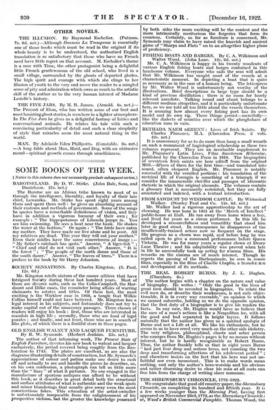The author of that informing work, The Present State of
English Furniture, devotes his new book to walnut and lacquer exclusively, the period covered being roughly from the Res- toration to 1745. The plates are excellent, as are also the diagrams illustrating details of construction, but Mr. Symonds's appreciations of colour and patina make one desire to rush off and actually to see and handle the pieces he describes, as, on his own confession, a photograph can tell us little more than the "lines ". of what it pictures. No one engaged in the manufacture of spurious antiques can afford to be without this book, as it describes in great detail both the structural and surface attributes of what is authentic and the weak spots and minor blunderings that usually give away even the most conscientious fakes. This education of the artist-swindler is unfortunately inseparable from the enlightenment of his prospective victims. but the greater the knowledge possessed
by both sides the more exciting will be the contest and the more intrinsically meritorious the forgeries that form its counters. Certainly, so far as furniture is concerned, Mr. Symonds may claim to have raised the knavish and ancient game of "Sharps and Flats" on to an altogether higher plane of proficiency.














































 Previous page
Previous page